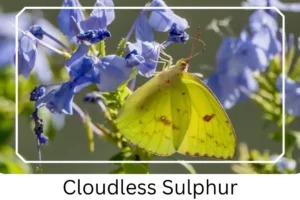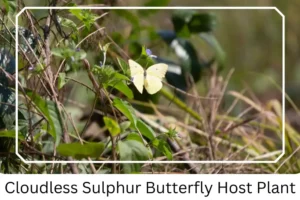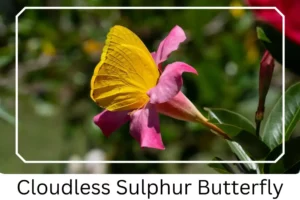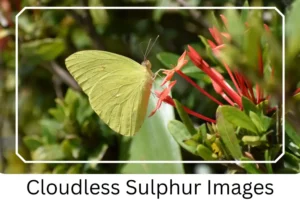Cloudless Sulphur (Phoebis sennae)
The Cloudless Sulphur Butterfly (Phoebis sennae) is a fascinating species known for its vivid yellow coloration and widespread distribution across the Americas. Belonging to the Pieridae family, these medium-sized butterflies exhibit a remarkable adaptability to various environments, from the lush landscapes of South America to the southern regions of Canada. This comprehensive guide delves into the lifecycle, habitat, and unique characteristics of the Cloudless Sulphur Butterfly, offering enthusiasts and researchers alike a closer look into its world.
Scientific Classification
- Family: Pieridae
- Genus: Phoebis
- Common names: Sulphur Butterfly
- Scientific Name: Phoebis sennae
Overview
Characterized by its bright yellow wings and swift flight patterns, the Cloudless Sulphur Butterfly is more than just a pretty face in the butterfly world. With three subspecies thriving across diverse habitats, this butterfly’s lifecycle—from egg to adult—presents a captivating journey of transformation and survival. The following sections will explore the detailed aspects of its identification, lifecycle stages, and interesting facts that contribute to its uniqueness among the Pieridae.
Description and Identification
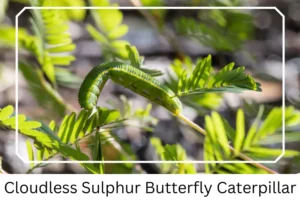
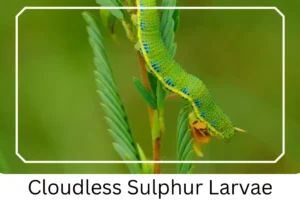 Caterpillar
Caterpillar
The journey of the Cloudless Sulphur begins with the caterpillar, emerging with striking yellow to green stripes and rows of dark dots. These nocturnal caterpillars craft tents within host plants like the partridge pea and various legumes, reaching lengths of 41-45 mm (1.6-1.8 in).
Pupa
Transformation continues into the pupal stage, where the chrysalis adopts a green or yellow hue, blending seamlessly with its surroundings thanks to its peculiar shape.
Adult Butterfly
The adult Cloudless Sulphur displays distinct features:
Sexual Dimorphism: Subtle differences are observed between males and females, primarily in their coloration.
Color and Appearance: Males boast a vibrant yellow, whereas females are a softer lemon to golden yellow with dark marginal borders. The underside shows a reddish-brown hue in both sexes.
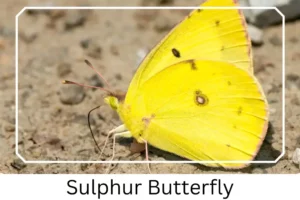
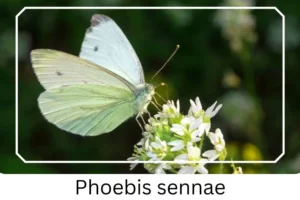 Average Wingspan: Ranges between 55–70 mm (2.2–2.8 in).
Average Wingspan: Ranges between 55–70 mm (2.2–2.8 in).
Flight Pattern: Known for their fast and agile flight.
Eggs
Cloudless Sulphur Butterfly Eggs are initially white and turn pale orange, before hatching into a larva within six days.
Quick Facts | |
| Distribution | Ranges from South America to southern Canada, thriving in warm climates. |
| Habitat | Prefers open areas such as seashores, gardens, and glades. |
| Lifespan of Adults | Averages 2 to 4 weeks. |
| Host Plants | Favors legumes, including partridge pea, sennas, and clovers. |
| Adult Diet | Primarily nectar. |
How to Identify Cloudless Sulphur Butterfly?
Identifying a Cloudless Sulphur Butterfly can be a delightful challenge for butterfly enthusiasts. Look for the distinctive bright yellow or light golden wings that set this species apart in the butterfly realm. Males typically display a more saturated hue compared to the lighter tones of females. The wing edges might reveal a faint dark border, more visible upon closer observation. In flight, their rapid and darting movements are notable, distinguishing them from other species. Pay attention to their preferred habitats—open, sunny areas with abundant legumes and flowers for nectar. Spotting their unique eggs or caterpillars on host plants can also provide clues to their presence.
Did You Know?
- The Cloudless Sulphur is significantly larger than most of its Pieridae counterparts, showcasing the diverse size range within the family.
- This species has been observed migrating, particularly in the fall, traveling great distances from the northern parts of its range to warmer southern locales.
- The Cloudless Sulphur’s ability to change the color of its pupa for better camouflage is a remarkable adaptation for survival.
Conclusion
The Cloudless Sulphur Butterfly is a testament to nature’s ingenuity, exhibiting fascinating lifecycle stages, adaptability, and beauty. Its presence across the Americas in varied habitats underscores the importance of biodiversity and ecosystem health. Whether you’re a seasoned lepidopterist or a casual observer, understanding and appreciating the nuances of such species enriches our connection to the natural world.
Cloudless Sulphur Pictures

Scientific Classification

- Family: Pieridae
- Genus: Phoebis
- Common names: Sulphur Butterfly
- Scientific Name: Phoebis sennae

